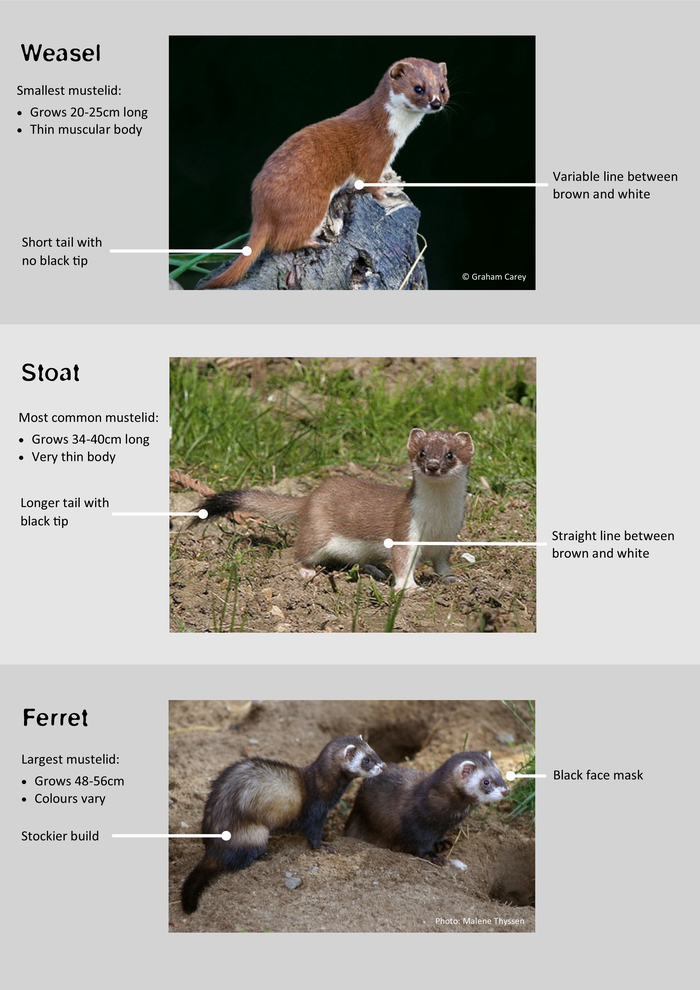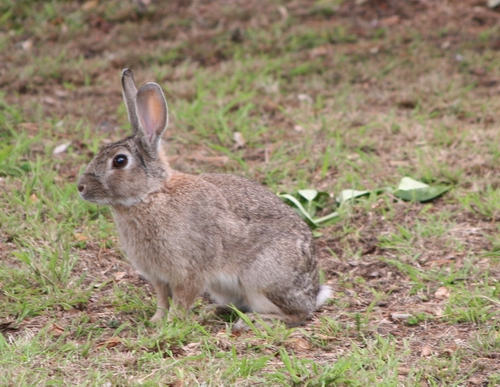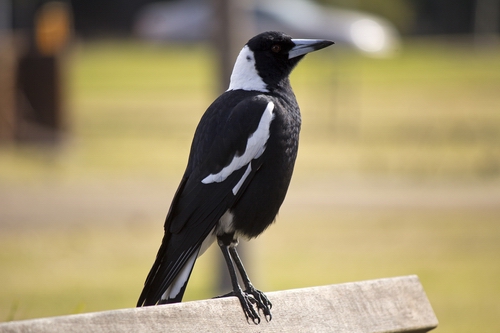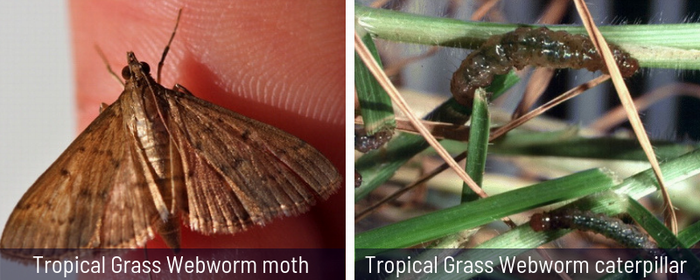Possums and other animal pests
What is a pest?
An animal or insect that has been introduced to New Zealand becomes a pest if it has the potential to cause significant national economic, environmental or cultural effects.
In their home environments overseas, these organisms often create no problems. However, New Zealand's warm climate and lack of natural predators has meant some species have made themselves too much at home at the cost of our native plants and animals.
The council's role
The Northland Regional Council (NRC) has primary responsibility for the management of plant and animal pests (on rateable land only) in Northland. This responsibility comes from provisions in the Biosecurity Act 1993. As part of its functions, the council identifies major pests and sets out methods for dealing with them in a regional pest management plan.
Hundreds of thousands of dollars are spent each year on controlling some of Northland's worst pests and managing those controlled at low numbers with the help of landowners.
The council also has to take steps to control new infestations of pests or the spread of existing pests into new areas and has plans to target seven of the region’s highest value forests during a 10-year period.
Northland's biggest pests
Possums
There are estimated to be up to 15 million possums in Northland and they eat tonnes of leaves, twigs and berries every night. In New Zealand, according to Landcare Research, possums chomp their way through about 21,000 tonnes of vegetation a day.
Possums tend to target new shoots and systematically destroy forest canopies. In combination with other browsing animals, they can eventually decimate tall forests. Rata, kamahi and tawa are especially vulnerable, as well as pohutukawa on the coast. Possums strip native forests of fruit, flowers and leaves which are vital food sources for birds. They are omnivores that eat the eggs and chicks of native birds and also insects.
 Possums have large eyes and catlike whiskers, which are characteristic of nocturnal animals.
Possums have large eyes and catlike whiskers, which are characteristic of nocturnal animals.
In Northland, the average adult possum weighs 2-3 kilograms, and lives for about seven to nine years, often breeding twice every year. The heaviest concentration of possums is usually along the outer edges of bush or scrub, in horticultural areas or where there are good nesting sites close to food sources.
The regional council undertakes initial possum control work in specified areas. The Council encourages the land user to work alongside the contractor to receive training in the use of poisons to control possums. The land user can then go on to gain a licence in the use of poisons such as cyanide. Land holders are encouraged to keep possum numbers low after the initial poisoning is finished.
 Without control, trees like this mamaku (black tree fern) will continue to be eaten by possums. (Photo credit: DOC.)
Without control, trees like this mamaku (black tree fern) will continue to be eaten by possums. (Photo credit: DOC.)
Mustelids
Mustelids are weasels, stoats and ferrets. They were introduced into New Zealand in the late 1880s to try and control rabbits. It didn't work and now rabbits and mustelids are both classed as pests in New Zealand. Mustelids are secretive animals that are rarely seen by humans.
Weasels are the smallest of the mustelids at 20 centimetres long. They are brown with a white belly, and like to eat mice, small birds, eggs, lizards and insects.
Stoats look similar to weasels but they are about 40 centimetres long, which means they can tackle larger prey. They have a chestnut-brown coat, which turns white in winter, a light-coloured belly, and a bushy, black-tipped tail. Stoats are more common than weasels because they survive on a wider variety of prey. They are the biggest killer of kiwi chicks.
Ferrets were farmed for their fur in the mid-1980s. When the fur industry collapsed, many were released into the wild and quickly became established so that New Zealand now has the largest known population of wild ferrets in the world.
Ferrets are the largest of the three species and are about 48-56cm long, including the tail. Their colours vary but they are usually dark brown or blackish with a creamy under fur, but they can appear almost white. The tail is uniformly dark. The face is pale with a dark mask over the eyes. Adult males are generally larger than the females.
They like to eat small animals such as rabbits, rodents, possums and birds, as well as eggs, lizards, frogs and insects. They are capable of killing adult kiwi and eat their eggs.
What's the difference between the mustelids?

Feral Cats
Many people love cats, but most do not understand that these great hunters are estimated to kill up to 100 million birds in New Zealand each year.
Cats do not distinguish between species. As well as rats and mice, some of their prey can include rare native species. When cats attack birds, they will often kill the parent of chicks and also eggs in a nest. Cats also often eat lizards and frogs.
In the early 1800s, the Stephen's Island wren was discovered on an island in Cook Strait. It was the only flightless perching bird known in New Zealand. Shortly after its discovery, the lighthouse keeper's cat killed all the birds, making the species extinct.
Feral cats are widespread in Northland. They have become established and are breeding in the wild as a result of people dumping their unwanted pets. Under the Northland Regional Council Pest Management strategy it is illegal to dump unwanted live cats in the wild. The council also wants people to control feral cats on their properties.
 Do not attempt to touch or pick up a wildcat, or even a kitten. They bite and scratch and can spread disease.
Do not attempt to touch or pick up a wildcat, or even a kitten. They bite and scratch and can spread disease.
Goats
Goats were brought to New Zealand in the 1770s by Captain Cook to establish a food source for shipwrecked sailors. The goats quickly colonised and have become a major forest pest.
Goats destroy the low-hanging vegetation and, when combined with possum damage to the upper canopy, severe deterioration of native forest occurs. They're one of the most destructive animals found in forests.
A goat population can double in size every two years because females start breeding at about six months of age and twins are common.
 Goats are able to stand on two legs to reach higher vegetation.
Goats are able to stand on two legs to reach higher vegetation.
Wasps
Wasps have good and bad characteristics. Beekeepers don't like them because they compete with bees for food. People don't like them either because of the possibility of being stung, which can be a serious health risk for anyone who is severely allergic.
However, wasps also kill other pests such as flies and spiders.
There are four main types of wasps in Northland - Australian and Asian paper wasps, German wasps and common wasps. German and common wasps look very similar - they both have yellow and black bodies. Nests are often underground, although they can also be found in trees.
The Australian paper wasp is brownish black or yellowish, sometimes with yellowish or whitish bands on the abdomen. The Asian paper wasp is yellow and black in colour. Paper wasps compete with other insects for nectar and honeydew resources. They build umbrella-shaped nests of wasp paper above ground on houses or other buildings and will also nest in trees or bushes.

Deer
Any deer sighted outside a farm should be reported to the Northland Regional Council.
Feral deer are a pest because they are prolific breeders, they seriously damage native bush by browsing, grazing, bark stripping and trampling and they are potential carriers of bovine tuberculosis. This disease is not present in Northland, and any outbreak would be a serious threat to the cattle industry in the region.
Control of feral deer is a specialised job for experienced hunters. There are known to be a few wild deer still eluding hunters in Northland, and the Northland Regional Council will respond immediately to any reports of sightings.
 Red deer in the forest. (Photo: Gordon Roberts.)
Red deer in the forest. (Photo: Gordon Roberts.)
Mynas
Myna birds can be seen everywhere in Northland. These imports from the tropics were first introduced to New Zealand in the 1870s and have made themselves right at home in the warm climate of the North.
They are stocky brown birds with a shiny black head and shoulders commonly seen in pairs or in small family groups. They're aggressive and territorial and have been known to move into the nests of other birds.
Mynas can be controlled by trapping with a pee gee trap, which is the most successful means of catching the birds.
 The myna is a tropical bird first introduced into New Zealand in the 1870s. (Photo credit: Phillip Griffin.)
The myna is a tropical bird first introduced into New Zealand in the 1870s. (Photo credit: Phillip Griffin.)
Rabbits
Rabbits were introduced to New Zealand by Captain Cook in 1777, and other settlers introduced more for food, fur and sport.
Feral rabbits graze the best grass in pasture, damage young trees and create a nuisance in vegetable gardens and orchards.
The saying “breed like rabbits” comes from the fact that rabbits can produce up to 30 young throughout the year, although the main breeding season is spring to early summer. A female usually mates again within 12 hours of giving birth.
Rabbits have been controlled by shooting and poisons.
The introduction of Calicivirus - a virus that only kills rabbits - has reduced the number of rabbits all over New Zealand. However, rabbits can gain immunity to the virus, as has been reportedly occurring in some parts of the South Island.
 Rabbits are usually grey-brown in colour.
Rabbits are usually grey-brown in colour.
Magpies
These Australian imports were introduced in the 1860s. There are two subspecies: white backed and black backed. The white backed magpie is the most common in Northland. The two interbreed to produce individuals with varying amounts of black and white.
Magpies are territorial and aggressive and are known to attack, kill or drive off other birds, including native species. They can attack and sometimes injure humans when they are defending their nests at nesting time.
Trapping is usually the best method of control.
 Magpies can be a nuisance during breeding season by swooping down on people. (Photo credit: Bidgee.)
Magpies can be a nuisance during breeding season by swooping down on people. (Photo credit: Bidgee.)
Future pests
Rooks
Rooks have been found and destroyed in Northland in the past, although there have been no recent reported sightings of the birds in this region.
The large black birds are well established in the rest of the country but had previously only been found as far north as the Waikato, with some individuals seen near Helensville and Muriwai.
Rooks nest in tall trees and eat a wide variety of insects and vegetation, including sown and germinating seed. They are a serious pest in cropping areas.
 Adults are totally black except for their face, which has light-grey skin bare of feathers. (Photo credit: H. Zell.)
Adults are totally black except for their face, which has light-grey skin bare of feathers. (Photo credit: H. Zell.)
Tropical Grass Webworm
This grass pest was only recently established in Northland and has quickly spread as far north as Te Paki and as far south as Taupo Bay. Damage was first seen near Houhora in early March, 1999.
The caterpillars can chew out a five-hectare paddock in 48 hours. They completely strip grass of green tissue, often leaving peeled stalks.
This pest was probably blown over from Australia in this latest infestation. It has been recorded in New Zealand before. However, previously it had failed to become established as it cannot survive frost. With climate warming, northern parts of Northland are frost-free, giving this pest a chance to settle in to some serious pasture munching.
The tropical grass webworm is pale in colour and feeds at night. Caterpillars feeding on pasture during the day are likely to be army caterpillars.

Argentine Ants
Argentine ants were first found in Auckland in 1990 on the site of the Auckland Commonwealth Games. They can now be found in a large area of Auckland and are widespread through Northland with some populations in the Bay of Plenty, Christchurch, Wellington and Taranaki. The spread has been mainly by human transportation in soil and plant materials.
The small ants are honey-brown in colour and typically forage in long columns three or four ants wide and are most active in warm weather. They mostly predate on other insect species, consuming everything in their way.
The ants pose a significant threat to insects and have also been known to kill baby birds in their nests.
 Argentine ants have invaded native habitats including scrub and mangroves.
Argentine ants have invaded native habitats including scrub and mangroves.
The threat of pests
New Zealand has lost a large number of its native species in the past 1000 years since humans settled on these islands. In many ways humans have been the biggest pests of all because they have totally transformed much of the land into farms, roads and settlements.
Scientists say that extinctions include:
- 32 percent of endemic land and freshwater birds
- three out of seven native frogs
- one of the three species of native bats
- three of the 64 reptiles
- 11 of the 2300 known plants
- at least 12 invertebrates, such as snails and insects.
The populations of most surviving native species have been heavily reduced, including 1000 that are now considered threatened.
Invasive pests and weeds are now the single greatest threat to biodiversity in New Zealand. Biological diversity, called biodiversity for short, has been described as the variety of all biological life - including plants, animals, fungi and micro-organisms, the genes they contain and the ecosystems on land or in water where they live. It is the diversity of life on earth.
Browsing animals such as possums and goats eat native plants. Introduced predators such as stoats, ferrets, rats and cats prey on native birds, reptiles, frogs and insects.
Some garden plants have escaped into the wild to become major weed problems in the native bush and on offshore islands. These plants threaten to choke out native species.
How can you help?
Call the Environmental hotline: 0800 504 639 or use the Pest Control Hub to report a pest if you see any of the new pests that are threatening our special Northland plants and animals.
Northland Regional Council staff can help with advice on any of these pests and with identification.
Support Landcare projects in your area, and help keep pests and weeds - especially possums - down to manageable numbers. Help with re-vegetation and clean-up projects.
The native trees and animals of Northland are too precious to be lost forever to these foreign invaders.
Further information
For more information about pests, visit: www.nrc.govt.nz/pestcontrolhub
Visit the Biosecurity New Zealand website: www.biosecurity.govt.nz
